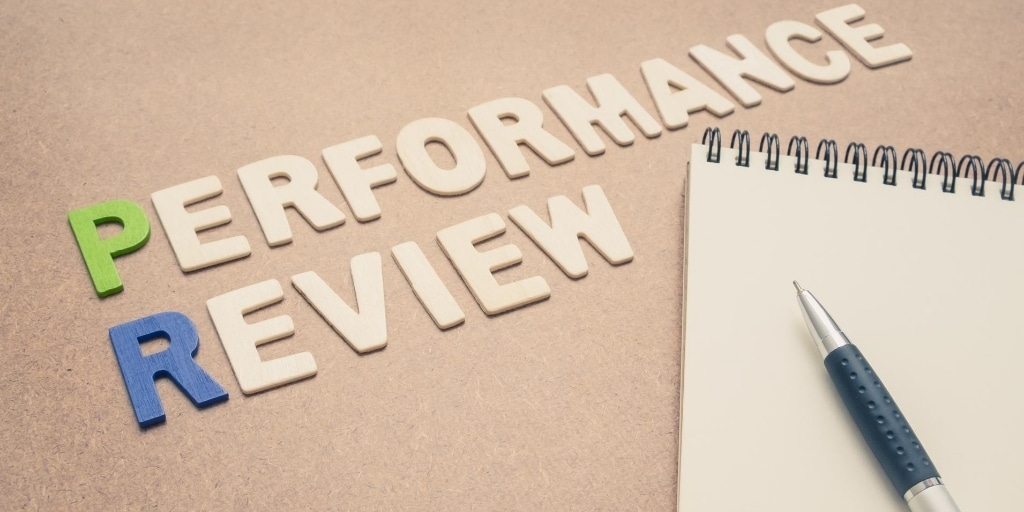It’s time to turn performance reviews from a one-sided event that makes employees cringe, into a mutual learning process that drives improvement.
Does anyone enjoy performance reviews? Does anyone find value in this annual get-together between manager and employee, where goals are rated on a 5-point scale, and the results are locked away in some folder until next year? In addition to being awkward and nerve-wrecking, traditional performance reviews have little to do with our actual day-to-day work, and the real metrics we want to improve on. Simply put, traditional performance reviews are ineffective.
It doesn’t have to be like this. With a little innovative thinking, the traditional performance review can transform into a mutual learning process that helps employees, managers, teams, and companies move forward. A continuous performance review process creates an environment where constant feedback and learning keep everyone on the same page, driving clearer communication, greater transparency, and better business outcomes.
Annual Reviews Don't Work For Your People,
Or Your Business
Back in 2008, UCLA management professor Samuel A. Culberth called to do away with the annual performance review in a widely circulated Wall Street Journal article. He was on to something, because years of research repeatedly show that annual performance appraisals are ineffective for both employees and companies. A 2017 study conducted by Adobe found that 64% of office workers and 62% of managers felt performance reviews were outdated and ineffective.
By boxing employee performance into a scale of 1 through 5, the annual review fails to offer insight into human nuance, and can even serve to lower employee morale when a lower than expected score is given. Furthermore, the five-point scale tends to create unproductive competition between employees and can foster a culture of suspicion and blame.
Maybe annual reviews stick around because they’re good for business? Not so much. A once or twice yearly review cannot result in action that pushes company performance forward. Of participants in the Adobe study, 58% felt that performance reviews have no impact on how they do their job. Not only are they ineffective for impacting business performance–annual reviews can actually hurt a company’s bottom line by draining resources and time. Global consulting firm Deloitte found in 2015 that they were spending two million hours per year completing forms, holding meetings, and conducting performance reviews.
More than a decade after calls for their abolition, it’s time to seriously rethink the annual performance review.

What Does A Good Performance Review Look Like?
Calls to reform the annual performance review have brought forth all kinds of performance management solutions. It’s up to each company to explore what solution best fits its unique circumstances and needs, but some baseline characteristics are shared by all effective performance management processes.
Future Focused
Both individual and company performance improves from small, incremental changes. So discussions about employee performance should focus on those changes–on the practical steps employees can take today, tomorrow, and next week to perform better. Gallup recommends reframing meetings that discuss performance from “performance reviews” to “progress reviews” aimed at continual improvement and development.
Developmental
Dominated by millennials, today’s workforce wants to develop in the workplace. “On average, only three in 10 employees strongly agree there is someone at work who encourages their development,” says Gallup. And as we’ve already seen, the traditional annual performance review has no impact on professional development at best, and curtails it at worst. Performance reviews that fit the times need to prioritize employee development and set metrics around learning and improvement accordingly.
Conversational
An effective performance review is an ongoing, two-way conversation, not a one-sided lecture that takes place once a year. If the goal of a performance evaluation process is to lead the company to better results, then a review needs to be viewed as a chance for both employee and manager to reflect. But it doesn’t have to stop there. Ideally, a performance review includes input from other teammates and colleagues. In other words, the people who you actually work with day to day should participate in a discussion of your progress at work. This way, everyone stands to learn and improve.
Continuous
Finally, effective performance reviews are ongoing, in accordance with what employees say they want: 96% of employees want to hear feedback regularly, and 63% of Gen Z say they want to hear timely, constructive feedback throughout the year. Continuous performance reviews offer the most holistic picture of employee performance because they account for natural ebbs and flows in work processes, rather than capturing just one moment in time–the time directly surrounding the annual review.
Implement Continuous Performance Management
Continuous performance management is a new way of looking at traditional employee review structures. Instead of annual, bi-annual, or quarterly reviews, continuous performance management lets you gather data on employee output from a variety of touch points. This results in a more holistic and accurate picture of employee performance, countering the possibility of bias or one-dimensional data points.
The good news? It’s easy for any company or team to implement a continuous performance management process, especially with the growing availability of tools to do so, like the Shamaym Platform and others. Implementing a continuous performance management solution opens the door for a more conversational performance appraisal process, giving employees and managers the tools to talk about future-oriented, developmentally focused improvements.
